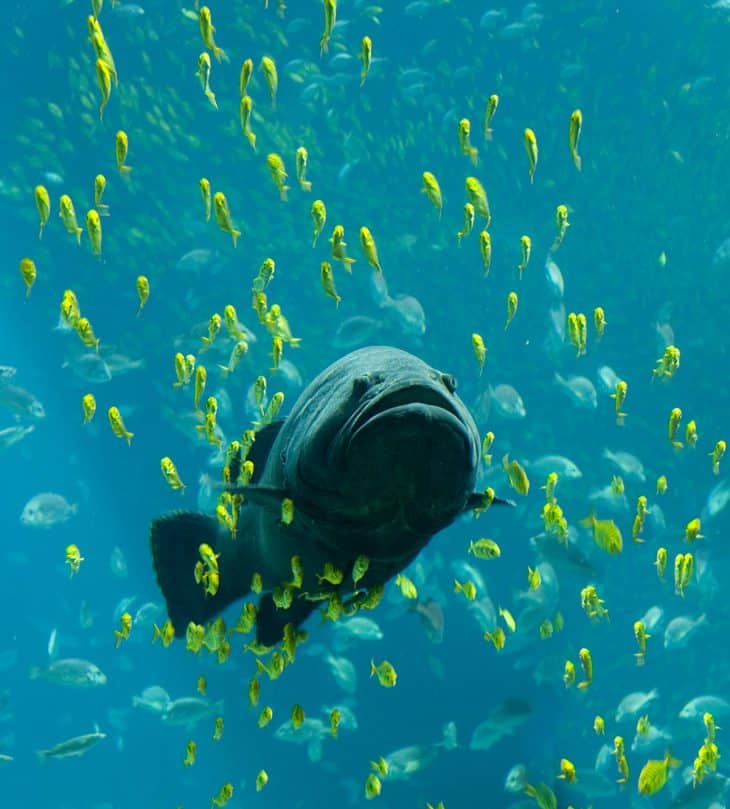
Fish don’t usually catch people’s attention, except as an item on the menu. But there’s more to these animals than just lying on a plate for you to eat, or to look pretty in an aquarium. Learn more about how these animals prove that big things do come in small packages with these fish facts.
- Infantfish are the smallest fish in the world, reaching only 8 mm long.
- Whale sharks are the biggest fish in the world at 16 meters long.
- Neotropical fish alone make up 10% of all vertebrates on Earth.
- Neotropical fish include an estimated 5,600 species in its category.
- Today, 1,173 fish species around the world face extinction from various factors.
- The first fishes evolved during the Cambrian Period around 541 million years ago.
- Fish evolved natural armor plating during the Paleozoic Era as protection from predators.
- Fish first developed jaws during the Silurian Period around 444 million years ago.
- Sharks first evolved during the Devonian Period, around 395 million years ago.
- Most jawless fishes died out at the end of the Devonian Period around 358 million years ago.
- Most fish families died during the Great Dying at the end of the Permian Period around 252 million years ago.
- Fishes and marine reptiles dominated the seas during the Jurassic Period around 201 million years ago.
- Fishes survived the extinction event that killed the dinosaurs at the end of the Cretaceous Period around 65 million years ago.
- Fish species greatly diversified during the Cenozoic Era that continues to the present day.
- The ongoing Holocene Mass Extinction has also affected fish diversity and population.
- The word fish comes from the German word Fisch.
- Fishes were the first vertebrates to evolve into existence.
- Fishes have a cold-blooded metabolism.
- No known fish species live in the deepest 25% of the ocean.
- Fishes are the most diverse vertebrates, with an estimated 34,000 species around the world.
The word fish is both singular and plural.
In the English language, fish is a singular term when used for a single example of any fish species. However, “fish” can also refer collectively to many kinds of fish.
Fish can drown.
You see, fish don’t actually breathe water. Instead, they filter dissolved oxygen from it. That’s why aquariums usually have those machines that pump oxygen into the air. If there’s no oxygen to filter from the water, then fishes in it will drown.
Not all animals with the word fish in their names counts as fish.
Though their names may suggest otherwise, cuttlefish, starfish, and jellyfish aren’t actually fish. Generally-speaking, fishes must have skulls, gills, and fins. Surprisingly, though, not all fishes have proper spines.
Some fishes have warm-blooded traits.
Some shark species, along with swordfishes and tuna, have the ability to keep their core temperatures higher than that of their surroundings. In most cases, only warm-blooded animals have the ability to do that.
Some fishes lay their eggs on land instead of in the water.
The mudskipper even takes this further, even mating on land. These fish burrow and lay their eggs in mudflats before returning to the water.
Fish species have an environmental division.
About half of all fish species in the world live in the oceans’ saltwater, also known as the marine environment. Meanwhile, the other half of the world’s fish species live in inland freshwater ecosystems.
Both marine and freshwater fish species have their centers of diversity.
For marine fishes, they primarily live in coral reefs, such as those in the Indian and Pacific Oceans. Australia’s Great Barrier Reef, for one example, has an estimated 1,500 fish species living in it.
For freshwater fish, their diversity is most seen in the river basins of the world’s tropical rainforests. The Amazon Basin, for one example, actually has more fish species in it than the whole of Europe.
Scientists think the first fishes evolved from sea squirts.
Their main evidence for this is how fish larvae resemble sea squirts in appearance. Sea squirts are invertebrates that attach themselves to a solid surface like a rock instead of swimming around.
They also feed passively by filtering water that passes through their bodies. In those senses, they’re closer to coral than fishes.
The earliest fishes didn’t have jaws.
This made it difficult for them to find food, so it helped that they evolved in cold water. They also had slow metabolisms as part of their adaptation to their environment, so they didn’t need to eat much. Instead, they scavenged dead or dying animals, or latched onto living ones and drank their blood for food.
Two species of jawless fishes still live in the present day.
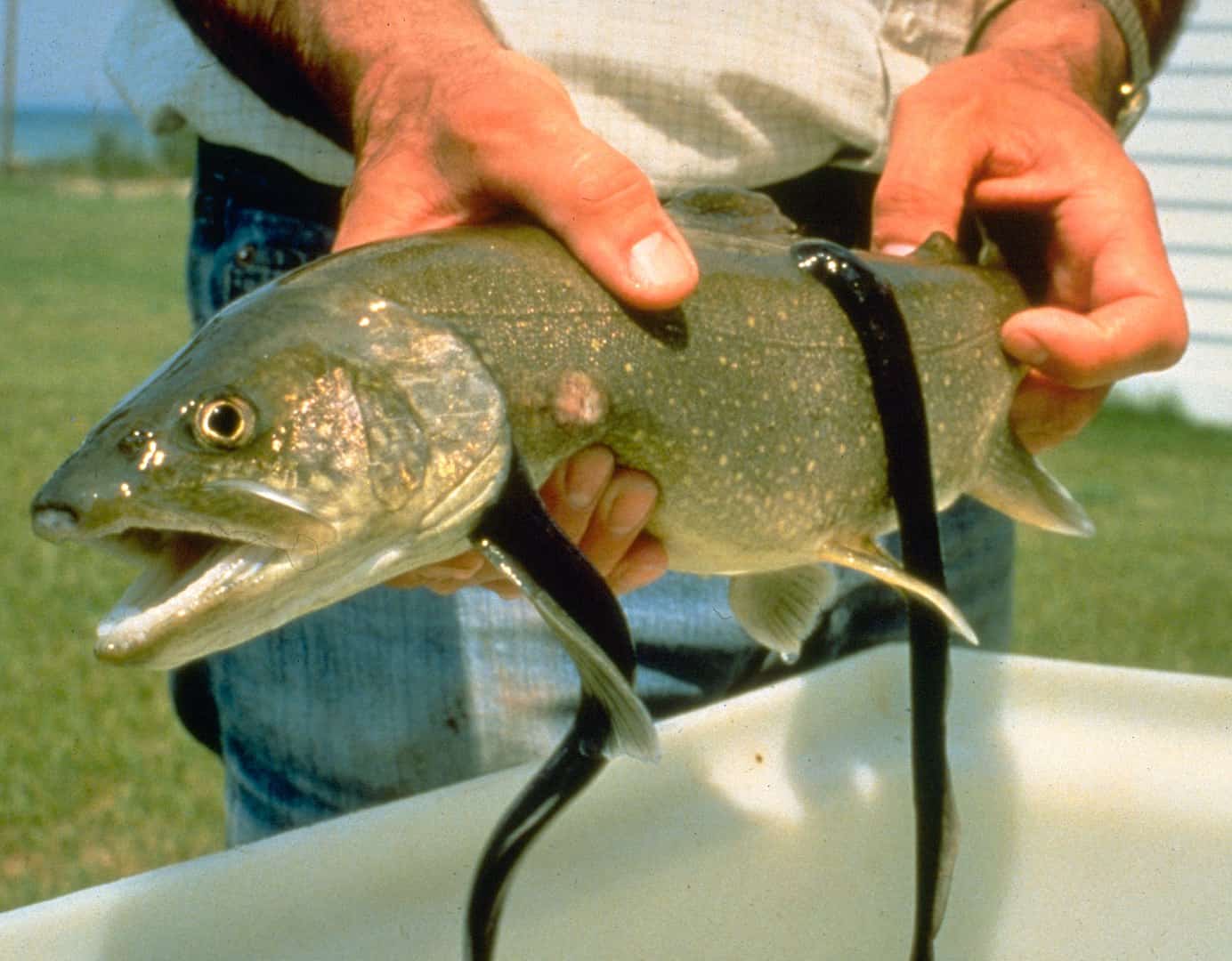
Among these jawless fish species are lampreys or long, eel-like fishes with round mouths lined with teeth. They latch onto the sides of bigger fish like trout and inject special chemicals to keep the wound from healing. As the fish bleeds, the lamprey sucks up the blood to feed itself. Definitely one of the more disturbing fish facts.
You can eat lampreys in Europe.
Though it may sound gross, people have eaten lampreys as far back as the Roman Empire. In the the Middle Ages, they also served as a delicacy commonly eaten in Lent when people couldn’t eat red meat. Today, lampreys still feature in cuisine all over the world, especially in Southwestern Europe and Scandinavia.
In Britain, lampreys sually get cooked into pies. In East Asia, lampreys are also fished for eating, such as in Korea and Japan. In Finland, it’s also common for lampreys to be pickled to preserve them for eating at a later date.
Lampreys are seen as pests in North America.
Though it’s still not clear how they managed to establish themselves in the Great Lakes, lampreys have been around for a while in America. Because of the way they feed on commercial fishes, some view them as pests. This has led Americans to build special filters and even use specially-designed poisons to control the lamprey population of the Great Lakes.
A Roman named Vedius Pollio used lampreys as a form of torture.
He had slaves who displeased him thrown into a pool of hungry lampreys. The lampreys would then suck them dry of blood. One slave, however, escaped this fate by running to Emperor Augustus. The slave admitted he had angered his master after breaking a crystal glass, only asking to die a more merciful death than getting eaten alive.
Pollio’s cruelty horrified the Emperor, who pardoned the slave and had him released. The Emperor then forced Pollio to watch as every crystal glass he owned smashed in front of him as punishment for his cruelty.
You can also find a mention of lampreys in the popular book series A Song of Ice and Fire.
George R. R. Tolkien’s book series features the character Lord Wyman Manderly, who is nicknamed Lord Lamprey for his love of lamprey pie.
Another jawless fish still alive today is the hagfish.
Similar to eels, the hagfish is the only animal with skulls but no spine. Instead, they have separate bone sections in their backs that function like a spine. Hagfish tend to spend a lot of their time dormant to conserve energy, usually moving only to eat every once in a while.
As scavengers, they usually eat dead animals, but hagfish also have the ability to absorb organic compounds from the surrounding water through their skin.
Like lampreys, people also eat hagfish.
Hagfish are only commonly eaten in Korea, especially in the port cities of the south. They’re also eaten in Northern Japan with the hagfish’s natural slime currently under study as a substitute for tofu.
The first jawed fishes didn’t have teeth.
Instead, the insides of their mouth also had natural armor plating. Scientists believe that these early fish simply crushed their food into mush with their mouths. The hardness of their natural armor also lets them do the basics of what teeth could later do.
Scientists still aren’t sure about the advantages of jawed mouths.
All they know is that all later vertebrates kept the hinged jaws that first evolved in fishes. The most common advantages seem to include greater biting force, and an improved ability to breathe. How’s that for neat fish facts?
Lobe-finned fishes first appeared in the Devonian Period.
The name comes from the flat, round-shaped fins possessed by the fish. They also stand out for their fins that extend from a central, bony stalk running along their body.
Today, the only lobe-finned fishes left in the world are lungfishes and the coelacanth.
Lungfishes breathe air.
As the name suggests, lungfish have to surface every once in a while to take a breath. However, the only exception is the Australian lungfish. Now there’s one for strange fish facts.
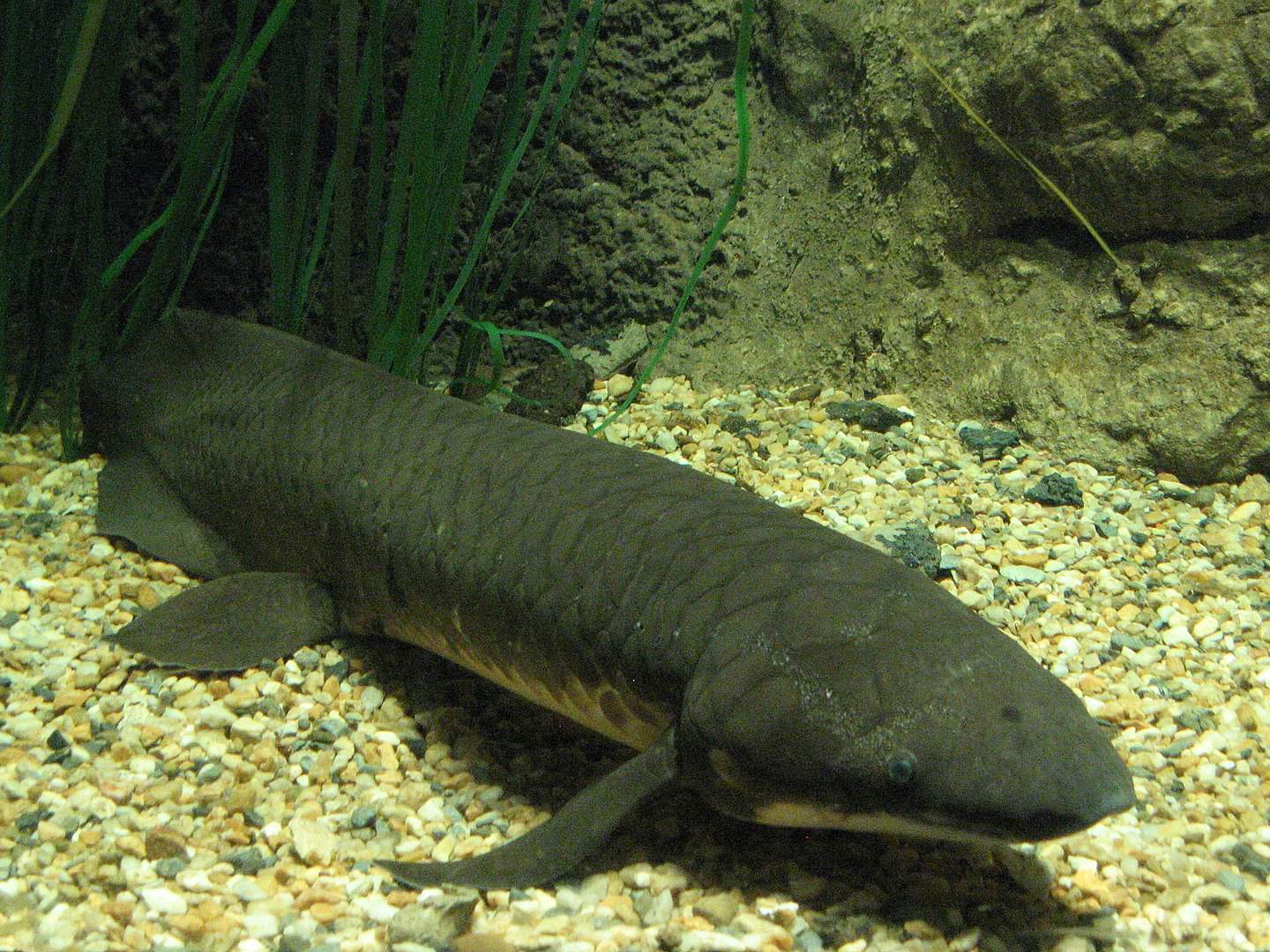
Some lungfishes evolved to survive dry seasons.
Specifically, the African and South American lungfishes evolved to survive the dry seasons in their homelands. They might breathe air, but they’re still fishes, and can’t survive for long without swimming in water. Before the water dries out, they burrow into the mud, leaving only their heads sticking out so they can breathe.
They also slow their metabolisms down to 1/80th of normal and even adjust the chemical composition of their waste. This allows them to survive the dry season until the wet season arrives and they can swim freely again.
Lungfishes can live for a very long time.
An Australian lungfish in an aquarium at Chicago managed to live for 84 years, from 1933 to 2017. Interestingly, it died not because of natural causes, but because the aquarium staff euthanized it as extreme old age caused pain to the fish. That said, it’s entirely possible it might have lived longer.
Some people eat marbled lungfish.
Found all over Africa, some people find the marbled lungfish disgusting, while others consider it a delicacy. Other tribal communities consider it taboo to eat the marbled lungfish, but others use it as a form of traditional medicine.
Scientists used to think coelacanths went extinct with the dinosaurs.
People used to think the coelacanth was extinct, until fishermen managed to catch a coelacanth off the east coast of South Africa in 1938. In fact, one specimen was even caught in Indonesia in 1998, which also disproved scientists’ early belief that the coelacanth only lived in the Indian Ocean.
People don’t eat coelacanth.
Unlike other exotic fish, the oils, fatty waxes and alcohols in coelacanth flesh all make for a very unpleasant flavor. They also prove difficult to digest and generally cause diarrhea for people who do eat it. Definitely one of the fish facts you wouldn’t wanna chew on.
Some fishes can breathe air without needing lungs.
Eels, for one example, have the ability to absorb air directly through their skin. Mudskippers also possess this ability. Scientists think this evolution came as an adaptation to living in shallow waters, where fish needed to breathe air at certain times and places.
Most fishes have small brains.
The average fish has a brain about 1/15th the size of a bird or mammal’s brain. However, sharks and elephantfish actually have brains as big as those of other animals their size.
Daytime fishes have very good vision.
Some fishes even have better vision than we do, able to see ultraviolet light normally invisible to human beings. On the flip side, nocturnal fishes have less developed eyesight, but see better in the dark than we do.
Fishes have even better hearing.
This is one of the more unsurprising fish facts, considering the way sound travels faster in the water than it does in the air. Fishes hear with both their ears and their skeletons, sensing the vibrations of sound in the water. Scientists even suspect that sharks can clearly hear sounds from over 3 km away.
Not all fishes lay eggs.
Fishes like split fins, surf-perches, and some sharks instead carry and give birth to live young. Scientists have also discovered that the embryos of some of these fishes actually consume each other in the womb. How’s that for creepy fish facts?
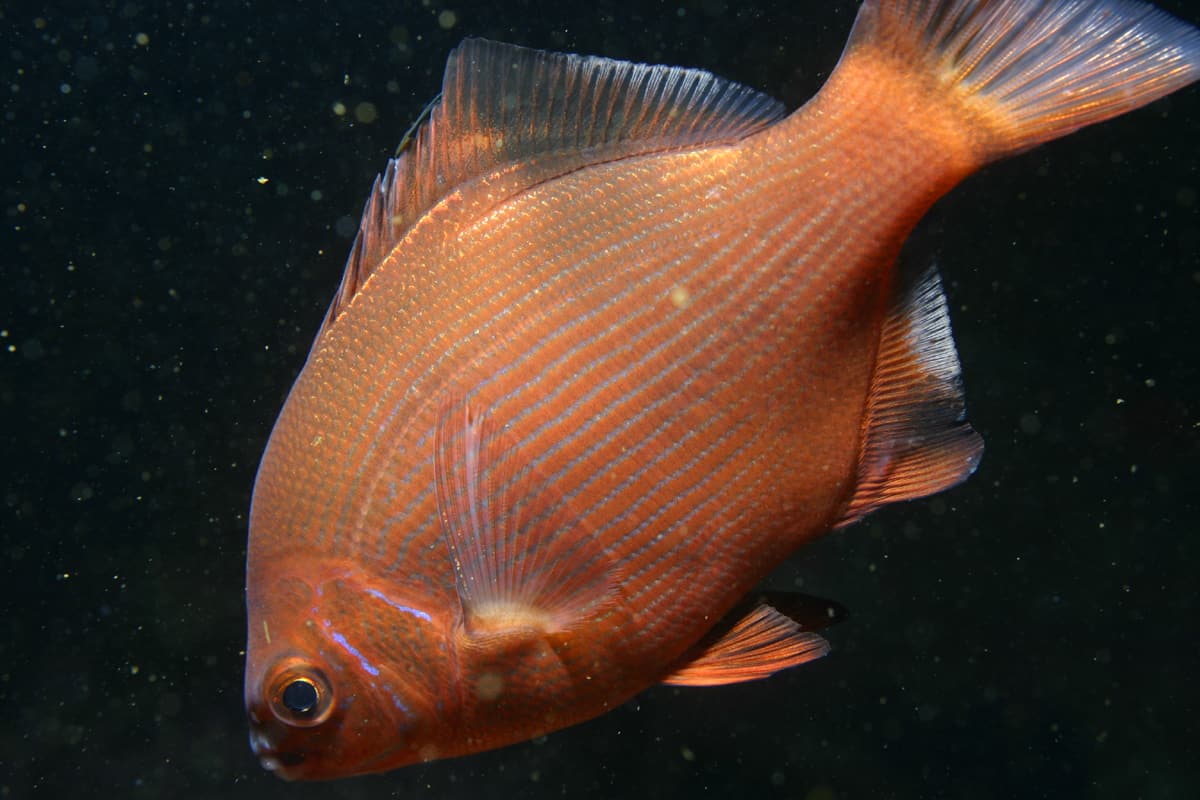
Fishes have the ability to make sounds.
Here’s another surprising example of Fish Facts. Typically, fish rub or grind their bones against each other to produce sound. Meanwhile, other fishes contract or vibrate their swim bladder to communicate with other fish.
Fishes produce slime for a reason.
Scientists call it mucus, and it’s not really that different from what’s in our noses. The slime on a fish’s scales traps microorganisms, keeping them from reaching the fish’s internal organs. This, in turn, prevents diseases of various kinds.
Fish can get sunburn.
Usually, water absorbs most of the radiation from the Sun. Even when its radiation goes up, fish usually just swim deeper into the water, or into the shade, to escape from it. When fish get sunburn, it usually means something keeps them from finding a way out of the heat. How’s that for curious fish facts?
Fish colors shift over their bodies.
Scientists call it countershading, with most fish being darker on the upper parts of their bodies. From there, their color becomes lighter the further down you go. Scientists believe that this helps fish protect themselves from predators looking down from above them. The fish’s countershading makes it more difficult to see them from above.
Fish immune systems work like our own.
Specifically, they also produce white blood cells that have the job of fighting germs and stopping disease. They work similarly enough that scientists have actually developed vaccines to protect fish from disease.
Some fishes protect other fishes from disease.
Scientists call them cleaner fishes, and they actually eat parasites or even dead flesh off of other fish’s bodies. Other fishes even go to places where plenty of cleaner fishes live, to have their bodies cleaned.
An example of a cleaner fish is the Bluestreak cleaner wrasse. They live in a large part of the world, from the South Pacific to the Indian Oceans, and even up to the waters of the Red Sea. Talk about a symbiotic example of fish facts.
Sharks have eyelids.
They’re also the only fish to have them in the animal kingdom. While they don’t need to blink underwater, they need the eyelids to protect their eyes whenever they’re eating or fighting with other sharks. It doesn’t provide complete protection, though, as a shark’s eyelids don’t close the whole way.
Sharks and rays don’t have swim bladders.
Most fish use swim bladders to keep their balance in the water. It also keeps them maintain a comfortable depth in the water. Since they don’t have these organs, sharks and rays have to keep swimming at all times, even when asleep.
As long as they’re moving, the water flowing around their fins keeps them at a steady depth. But if they ever stop swimming, then they’ll sink to the bottom of the sea.
Electric eels can put out a lot of power.
Electric eels can release up to a full ampere of electric current, while a typical car battery would take 2 days to put out the same amount. Since it only takes 0.2 amperes of current to kill a person, this makes electric eels highly deadly. Definitely one of the fish facts you have to keep in mind if you see one in the wild.
Stonefishes have the deadliest poison out of all fishes.

Found in the coastal waters of the Indian and Pacific Oceans, stonefish are named after the way they bury themselves in the sand. Stonefish display this behavior not to hide from predators, but from prey that might see and evade them.
This also means swimmers and other humans don’t notice the stonefish until its spines sting them. Stonefish poison has been known to cause pain, swelling, necrosis, and even death in severe cases.
It’s safe to eat stonefish.
Although fatal, stonefish poison is heat-sensitive. Heating it causes the poison to break down, losing its deadly properties in the process. This leaves the stonefish’s flesh safe to eat. Usually cooked with ginger in clear soup, stonefish is a delicacy in Japan and China, occasionally served as sashimi.
Pufferfish makes for a dangerous meal.
In Japan, they’re served as the delicacy fugu. The problem is that the pufferfish’s flesh is very poisonous, with a single pufferfish having enough poison to kill 30 people. Unlike the stonefish, pufferfish poison also isn’t affected by heat.
Pufferfish chefs have a license of their own.
The license certifies them as having completed government-regulated training on the proper preparation of fugu. The final exam for their training involves making a complete dish of fugu and then eating it themselves. If they’re unaffected, then they pass.
If they’re affected, whether fatally or not, then they fail. Any restaurant that serves fugu must publicly display the chef’s license for their customers to know that they can safely eat their food.
Fugu is still actually poisonous.
It’s impossible to completely remove the poison from a pufferfish’s flesh. The chef just removes most of it, with the traces of poison actually giving fugu its unique taste. Even so, it can get dangerous, so much so that Japanese law actually forbids the Emperor himself from ever eating fugu under any circumstances. Definitely one of the more daring fish facts.
Male Emperor Angelfish have harems.
These fish live in schools with 5 female Emperor Angelfish. When the male dies, the biggest female in the school actually changes its gender to become a male. He then takes over as the leader of the school. Now there’s one for interesting fish facts.
Flying fish don’t actually fly.
Instead, they glide at high speeds, staying in the air through the wind flowing over their fins. Once they slow, they would fall back into the water. Flying fish can glide for long distances too, usually up to 50 meters.
However, scientists have observed them gliding further, up to a distance of 200 meters. These fish can reach heights of up to 6 meters, which easily 3 times the height of the tallest humans alive.
Piranha means scissors in Brazilian.
Specifically, the root of their name, pira nya, means scissors. This refers to how their teeth sharp enough to tear meat to pieces. Despite their reputation, no records exist of piranha ever eating living people. Instead, they usually eat other fish, fruits that fall into the water, livestock, and corpse.
Seahorses swim upright.
Although they’re the only fish that can swim upright, it takes them over an hour to reach the smallest of distances. This speed makes the seahorse look as though they aren’t even swimming at all, just drifting with the ocean currents.
Male seahorses carry their eggs.
Female seahorses lay their eggs inside a pouch on the male seahorse’s belly. The eggs stay there until they hatch, at which point the male seahorse pops them out of his pouch.
Salmon swim for long distances.
Salmon can swim up to 3,200 km in just 60 days. They usually swim these distances during mating seasons, when they leave the oceans for inland rivers. Once they reach these rivers, they mate and lay their eggs before dying.
Clownfish get their names from their bright colors.
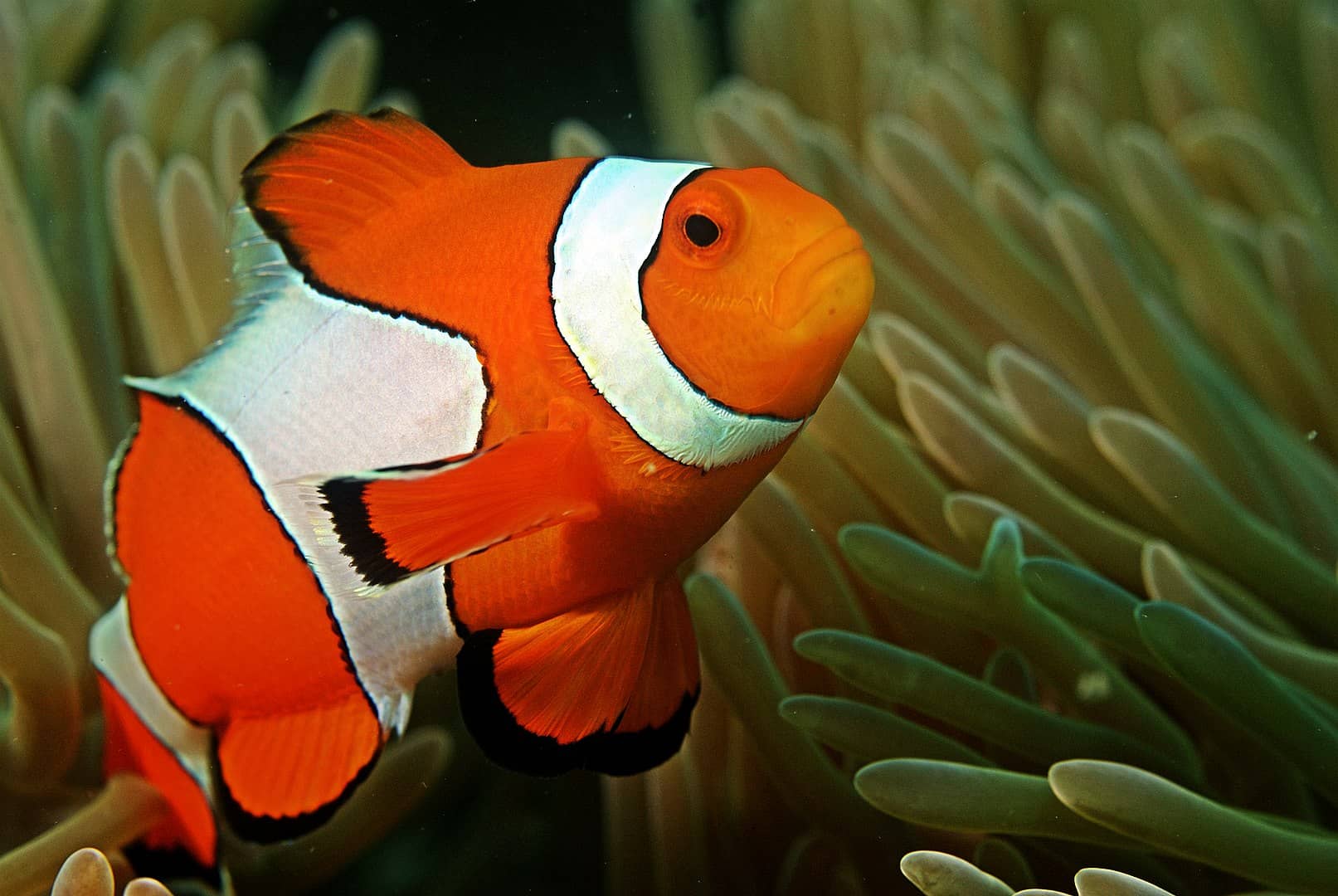
Scientists believe that clownfish evolved these colors as a form of protection from predators. Normally, animals with bright colors tend to have natural poisons as a form of protection. Clownfish aren’t poisonous, but due to their coloration, most predators would rather not test it. Definitely one of the fish facts that Nemo didn’t teach you.
Clownfish live in sea anemones.
Sea anemones deliver painful stings that can be fatal to fish. Smaller animals, like the clownfish’s predators, would rarely risk getting close to a sea anemone. That doesn’t mean that clownfish don’t get stung, though. Over time, clownfish build up resistance to the poison, virtually becoming immune enough to live there.
Clownfish star in the film Finding Nemo.
The story revolves around an adult male clownfish named Marlin, who lives in the Great Barrier Reef. His son Nemo got caught by a scuba diver as a pet, and the story follow’s Marlin’s journey to Australia to find and bring Nemo back home.
Antarctic icefish can live in sub-zero temperatures.
Due to the natural antifreeze in their blood, Antarctic icefish can survive the harsh cold of the tundras. Without that antifreeze, their blood and other bodily fluids would cause their cells to simply burst as they freeze into ice crystals.
Fish sleep strange.
Scientists have noticed that when fish sleep, their brain activity doesn’t shift the way humans and other animals do.
There’s an easy way to tell if a fish moves slowly or quickly.
An easy way to tell how quickly a fish moves is by looking at their fins and tail. If a fish has thin fins and a split tail, you can be sure that it moves fast and swims long distances. In contrast, fish with wide fins and large tails tend to move slowly and only swim short distances.
Schools of fish have a single leader.
Unlike wolf packs, the leader of a school of fish doesn’t stay at the front lines, but in the center of the school. The fish around it follow its direction, swimming in any direction the leading fish decides to swim in.
Most fishes can only swim in one direction.
Specifically, they can only swim forward, which is why you’ll never see fishes swimming backward. If they want or need to go back the way they came, they go around, hence fish sometimes swimming in circles. The only exception to this are eels, who have the ability to swim backward.
Fish don’t actually smell bad.
Scientists have discovered that fish don’t normally have the chemicals that our noses pick up as fishy smells. Those chemicals only get produced after fish spend too much time outside of the water. Even then, they must die first before their flesh starts breaking down and producing those chemicals in the process.
Fish tornadoes are a rare natural phenomenon.
When tornadoes reach lakes, rivers, and coasts of seas and oceans, they can suck fish up into the clouds, raining them down from the sky once the tornado stops. This is where the famous phenomenon of fish raining from the sky comes from.
Records of such events go back to ancient times, with the oldest being a testament by the Roman writer Pliny the Younger in the 1st Century AD.
Tetrapods evolved from fishes.
Tetrapods include all land vertebrates, whether amphibians, reptiles, birds, or mammals. The name references this, literally meaning four-legged. The first tetrapods appeared during the middle of the Devonian Period, with the Ichthyostega.
The ichthyostega had legs and lungs, but also had gills and lived mainly in shallow waters near the shore. Over millions of years, the early tetrapods evolved to live mainly on land, becoming the ancestors of modern land vertebrates.

Tetrapods also first evolved in the Devonian Period.
One hypothesis for their evolution was that inland waters quickly dried out in hot and dry conditions. This led to the need for the animals in drying water to move overland to other, wetter, places. Another hypothesis is that they evolved to survive during periods of high and low tide, and so needed to breathe air and move overland during low tide.
There’s also a theory that tetrapods evolved to live in uneven, woodland areas, and so needed the ability to move over uneven ground and outside the water. Scientists continue to study and debate the subject to this day.
Millions of tons of fish get caught every year.
The global fishing industry catches an average of 154 million tons of fish per year. Commonly caught fishes include anchovies, cod, flounder, herring, salmon, and tuna. That said, a large portion of the fishing industry includes animals that aren’t technically fish, such as crab, shrimp, and other marine animals.
Fishes appear in art.
Much like fishing itself, fishes in art go back even before the dawn of human civilization. Many examples of cave art around the world show fishes of various species, which archaeologists consider as evidence that fishing predates civilization. Even after the dawn of civilization, fish appeared in human art and architecture. These range from sculptures, wall carvings and paintings, and other examples of art through the ages.
People also go fishing for recreational purposes.
People commonly use a fishing rod equipped with a reel, line, and hook to catch fish. A variety of baits exist for recreational fishermen’s convenience. Fish caught in this way usually get taken home for consumption or released back into the sea.
Fish that get released into the sea sometimes die soon afterward.
This usually happens out of stress from getting caught. Another reason is spending too much time out of the water before returning to it. This produces too much stress on their bodies that they can’t recover from.
Overfishing is one of the biggest issues facing fishes around the world today.
First of all, overfishing doesn’t necessarily end in extinction. Instead, it simply causes fish stocks to drop so low that it makes fishing unprofitable. This particular case happened to a Pacific sardine fishery off the California coast. In 1937, fishermen caught 700,000 tons of sardines in a year. But by 1968, they only caught 24,000 tons, causing the fishery to collapse from a lack of profitability.
Overfishing also causes clashes between various groups.
This especially happens in areas where fishing forms a major part of the economy. With so many people working in the sector, plus the profits they bring, governments naturally support them. This, in turn, causes friction with the scientific community, which pushes for limits to the fishing industry with conservation in mind. Limits would cut profits and even cause lost jobs, and thus a lack of support from the business and public sectors.
Some forms of fishing can harm the environment.
Governments have actually banned two of those methods exactly because of that reason. Blast fishing is one of those, involving throwing explosives into the water. Fishermen then scoop up the fishes killed or stunned by the explosion. The other is cyanide fishing, where cyanide is actually poured into the water. The fishermen then scoop up the poisoned fish. Both not only damage the environment but actually introduce poisonous chemicals into the catch.

Bottom trawling is another damaging fishing method.
This method of fishing involves dragging a net behind a ship along the seabed and scooping up everything in the way. Scientists estimate up to 25% of all underwater life in the way gets scooped up with such a method. This, in turn, could collapse the food chain the ecosystem depends on with disastrous consequences.
As far back as 2005, both the UN and even former US President George W. Bush called for the banning of deep-sea trawling. Even so, no government has passed measures to even limit the use of the method.
Ghost fishing is another major concern.
This refers to how fishermen sometimes abandon old nets out at sea. The abandoned nets then drift with the ocean currents and trap animals in their path. Not just fish either, but even turtles, sharks, and others marine life. Trapped by the net, these unfortunate creatures would weaken and starve to death.
Another controversial fishing method is shark finning.
This practice involves catching sharks, then cutting off their fins before releasing the shark back in the water. Without their fins, though, sharks can neither swim nor float in the water. Instead, they sink to the bottom where they either starve or get eaten by other predators. Scientists estimate up to 100 million sharks get finned every year, causing massive damage to the ecosystem they’re part of.
Among fishes, sharks also face the regular culling of their population.
Shark culling is the practice of killing a number of sharks every year. This keeps their population under control and limits the number of shark attacks. In Queensland, Australia alone, an estimated 50,000 sharks suffered culling between 1962 and 2018. Critics argue the practice has done nothing to limit shark attacks, and only damages the ecosystem.
Invasive fish species are also a concern around the world.
This involves fish species from one part of the world getting introduced to another part of the world. Once there, they compete with native species for living space and food, damaging the ecosystem in the process. For example, the introduction of the Nile Perch to Lake Victoria in the 1960s actually caused the extinction of no less than 500 native fish species. While some survived in captivity, most no longer exist outside of history books.
Fish feature heavily in Ancient Mesopotamian myths.
The god of water, Enki, usually used a fish as his symbol. The people also commonly offered fishes to the gods at their temples. Healers and exorcists also dressed up as fish while performing their duties. A legendary hero of Babylon, Oannes, is actually supposed to have dressed in the skin of a fish.
An ancient Syrian goddess also used a fish as her symbol.
This was Atargatis, a fertility goddess from Ancient Syria. During her annual festival, only her priests had permission to eat fish.
The Biblical tale of Jonah originally involved a fish.
Only modern translations describe it as a whale. In older texts, it’s only said that a big fish swallowed him up. After 3 days, the fish vomited him out so he could continue on his divine mission to Nineveh, in the Assyrian Empire.
Early Christians associated fish symbolism with Jesus Christ.
This reference Jesus calling his disciples as fishers of men. It also referenced one of Jesus’ miracles, where he was able to feed hundreds of men and women with just two fishes.
Scientists have only thoroughly explored 1% of the ocean.
This leads them to suspect that more mysteries and discoveries await in the remaining unexplored 99% of the sea. These include millions of undiscovered species of fish and other kinds of plants and animals. Definitely one for mysterious fish facts.

Was this page helpful?
Our commitment to delivering trustworthy and engaging content is at the heart of what we do. Each fact on our site is contributed by real users like you, bringing a wealth of diverse insights and information. To ensure the highest standards of accuracy and reliability, our dedicated editors meticulously review each submission. This process guarantees that the facts we share are not only fascinating but also credible. Trust in our commitment to quality and authenticity as you explore and learn with us.
